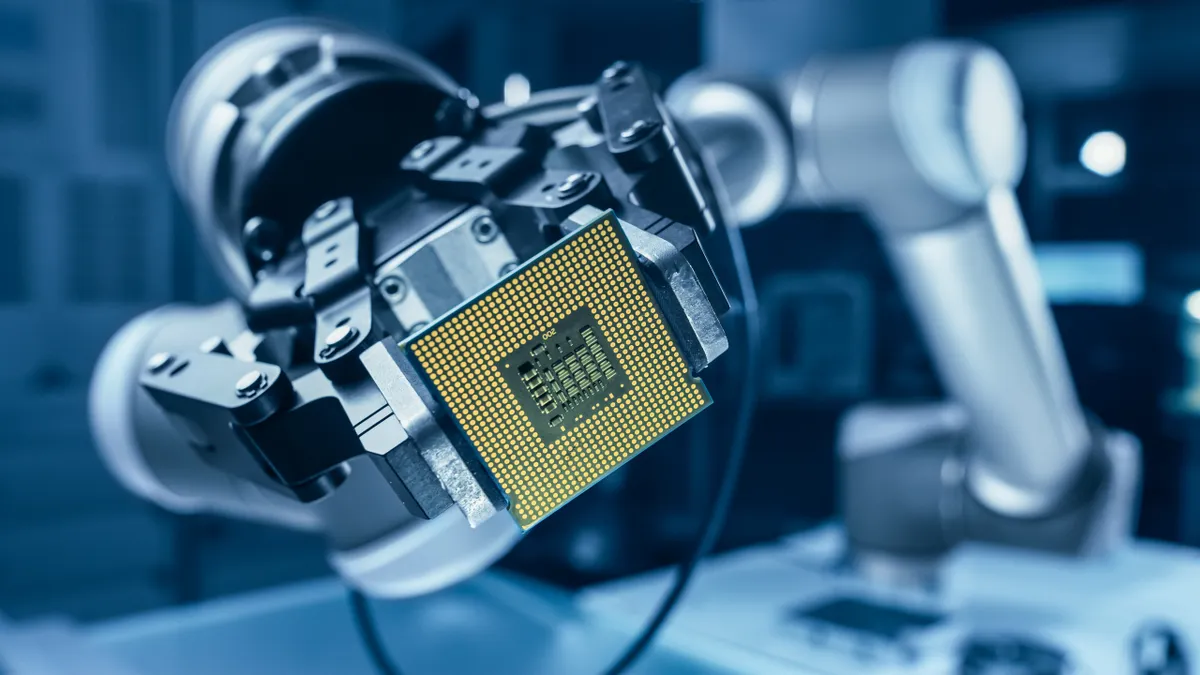Dive Brief:
- AI-optimized PCs and smartphones will capture nearly one-quarter of their respective categories this year, according to Gartner. The analyst firm estimates 54.5 million PCs and 240 million smartphones embedded with high-capacity AI processing cores will ship this year as manufacturers ramp up production.
- Early adoption in 2024 will give way to broader demand over the next three years, IDC said Wednesday. The technology services company expects AI PC shipments to triple in the next three years, capturing nearly 60% of the overall PC market by 2027.
- The PC industry is running fast to capitalize on the expected benefits of moving AI capabilities from the cloud to discrete devices, Tom Mainelli, group VP, devices and consumer research at IDC, said in the report. “Over the next few years, we expect the technology to move from niche to a majority.”
Dive Insight:
A renewed race to enhance PC processing power is underway.
AMD, Intel and Nvidia have all unveiled chips designed to run generative AI tasks on individual workstations, independent of external on-prem or cloud servers, in the last two months. PC manufacturers quickly followed suit, with Dell, HP, Lenovo, and Samsung among the major vendors bringing products to market this quarter.
Despite an imminent refresh cycle, which is expected to fuel a device market rebound this year, enterprise adoption will be slower to take root, as executives weigh device upgrade costs against the near-term benefits of emerging product lines.
“These products will initially launch in the premium end of the market,” Linn Huang, IDC research VP, devices and displays, told CIO Dive in an email. “Some enterprises will find significant benefit adopting these early, because some users will find significant utility in onboard AI.”
It will also take time for software providers to fully harness the potential of on-device AI and develop clear enterprise use cases, Ranjit Atwal, senior director analyst at Gartner, said in an email.
“Business device buyers will demand compelling reasons to invest,” Atwal said.
Gartner defines AI PCs as laptops and workstations equipped with dedicated AI accelerators or cores, neural processing units, accelerated processing units or tensor processing units.
IDC has a three-tiered classification for the devices:
- Hardware-enabled NPU products that run specific AI features locally.
- Next-generation PCs outfitted with an NPU and an AI-first operating system enabling broader on-device AI capabilities.
- Advanced AI PCs that will broaden workload capabilities and further enhance NPU performance when they are production ready.
Implementing onboard AI brings additional costs, mostly from the NPUs and additional memory, Huang said.
Gartner said tech buyers should largely put AI PCs on their 2025 agenda, to coincide with the Windows 11 refresh cycle and increased availability of NPU-infused products.
“Model tuning and integrations will continue to happen in the cloud in the near term, given the size of the models,” Atwal said. “As these models are fine tuned into dedicated lighter LLMs, specific groups of users will be able to take advantage of the capabilities.”
Organizations may nonetheless get some value out of deploying AI PCs with engineering and developer teams. Updates coming later this year may deliver significant productivity gains for many employee groups, Huang said.
“Yet, it is also true that the technology, use case and surrounding ISV ecosystem should rapidly evolve in the ensuing five years.," Huang said."The trick will be in identifying the right users, departments, personas and scenarios that will benefit early from client-side AI.”












